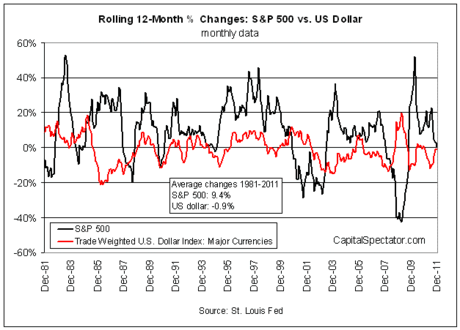Tactical Hedging of Foreign Currency Risk via ETFs
Post on: 16 Март, 2015 No Comment

Actively Managed ETFs News:
For many investors, currency investing and risk have not historically been key determinants of their asset allocation decisions. However, with the proliferation of globally allocated portfolios, many investors are seeking to identify not only which asset classes appear attractively priced, but which currencies may offer opportunities as well. The rapid adoption of currency-hedged equity products can be seen as a logical byproduct of this trend. For many investors, motivations for investing abroad are to capture attractive valuations in underlying asset prices and enhance diversification. Unfortunately, currency fluctuations often represent an unwanted source of volatility or drag on performance. Should our theory of continued dollar strength persist in 2015, investors should consider bullish dollar positions as one way to help reduce risk.
By incorporating a bullish dollar strategy into a portfolio, investors can selectively hedge currency risk or use it as a tactical way to benefit from a rise in the U.S. dollar. A distinct benefit we see compared to currency-hedged equity strategies is that investors are able to maintain legacy exposures while reducing currency risk. As we show in the chart below, over the last 10 years, the value of the dollar has exhibited a strong negative correlation (-0.71) with the value of unhedged international equity positions. 1 During periods of market stress, risky assets underperformed, and the value of the dollar has tended to strengthen. For investors interested in reducing the volatility of their portfolios, blending dedicated currency strategies to international equity positions could make sense.
Rolling Performance of International Equities & the U.S. Dollar
12-month Rolling Returns: MSCI ACWI ex-U.S. vs. Citi G-20 Liquidity
Weighted Currency Index (RHS), 11/30/14
For definitions of terms and Indexes in the chart, visit our glossary .
Mechanics of Dollar Bull Currency Strategies
While many investors understand the impact of currencies on their portfolios, they may not fully understand how to allocate to dedicated currency strategies as part of the asset allocation process. In WisdomTree’s approach to the asset class, our currency strategy Funds are structurally no different from our equity or fixed income Funds. A dollar bullish strategy is created through the combination of short-term Treasury bills or repurchase agreements and forward currency contracts that sell foreign currencies against the U.S. dollar. With the short-term fixed income positions serving as collateral, investors gain exposure to currency markets on a one-to-one notional basis. For investors concerned about currency risk, strategies such as the WisdomTree Bloomberg U.S. Dollar Bullish Fund (USDU) could prove beneficial.
1 Sources: Bloomberg, Citigroup, WisdomTree, as of 11/30/14.
Investments in currency involve additional special risks, such as credit risk and interest rate fluctuations. Derivative investments can be volatile, and these investments may be less liquid than other securities, and more sensitive to the effects of varied economic conditions. While the Fund attempts to limit credit and counterparty exposure, the value of an investment in the Fund may change quickly and without warning in response to issuer or counterparty defaults and changes in the credit ratings of the Fund’s portfolio investments.














